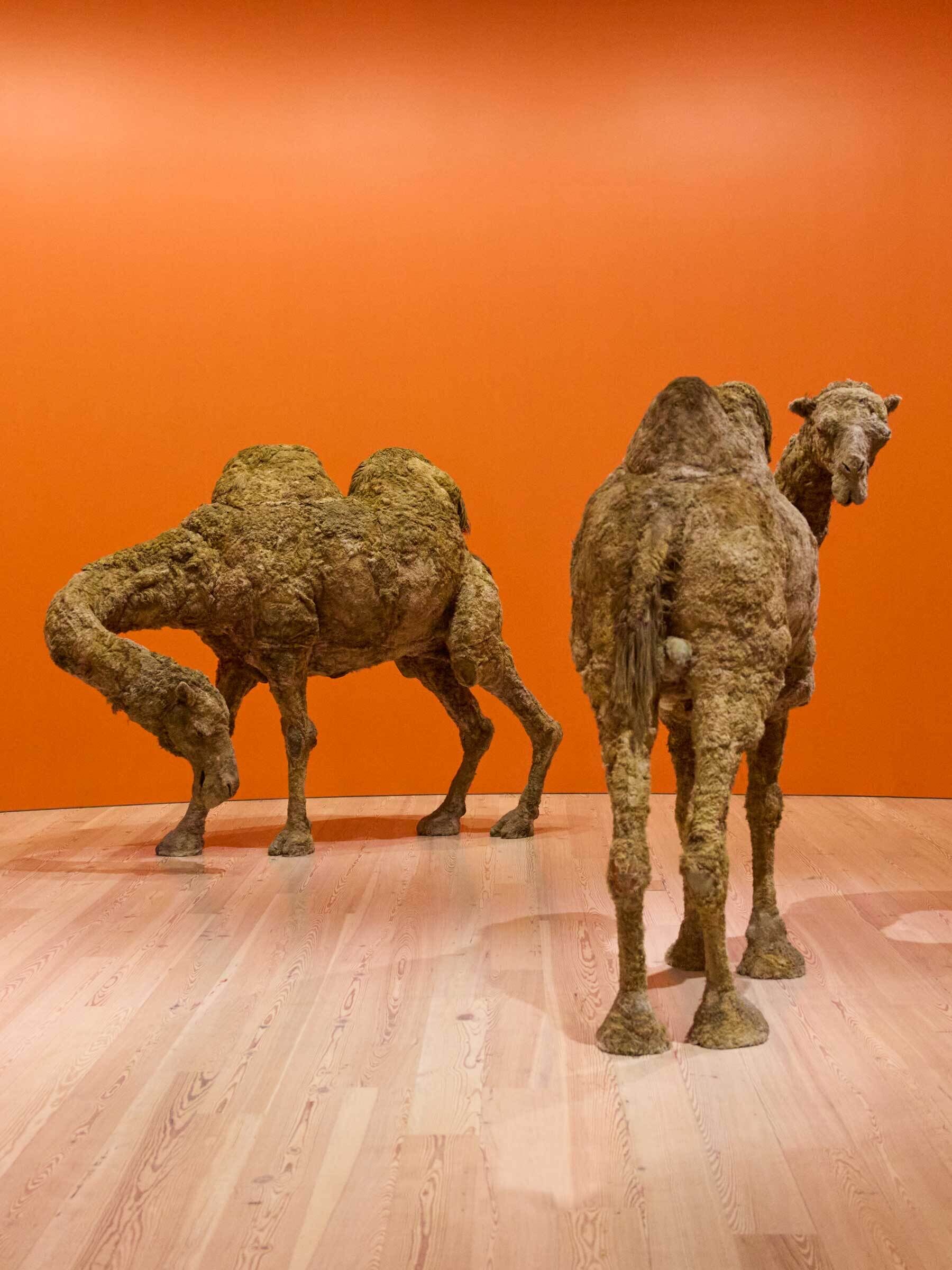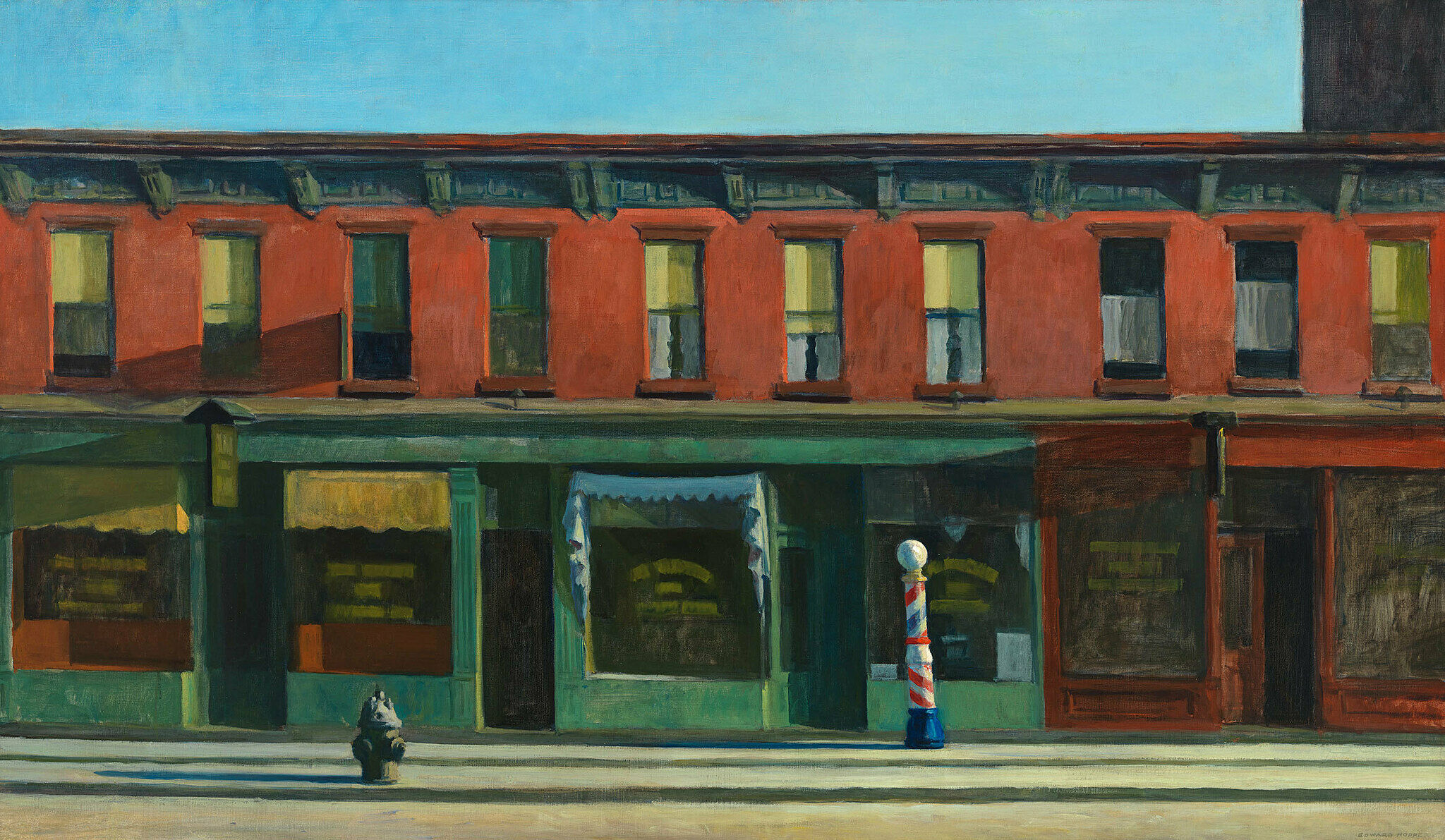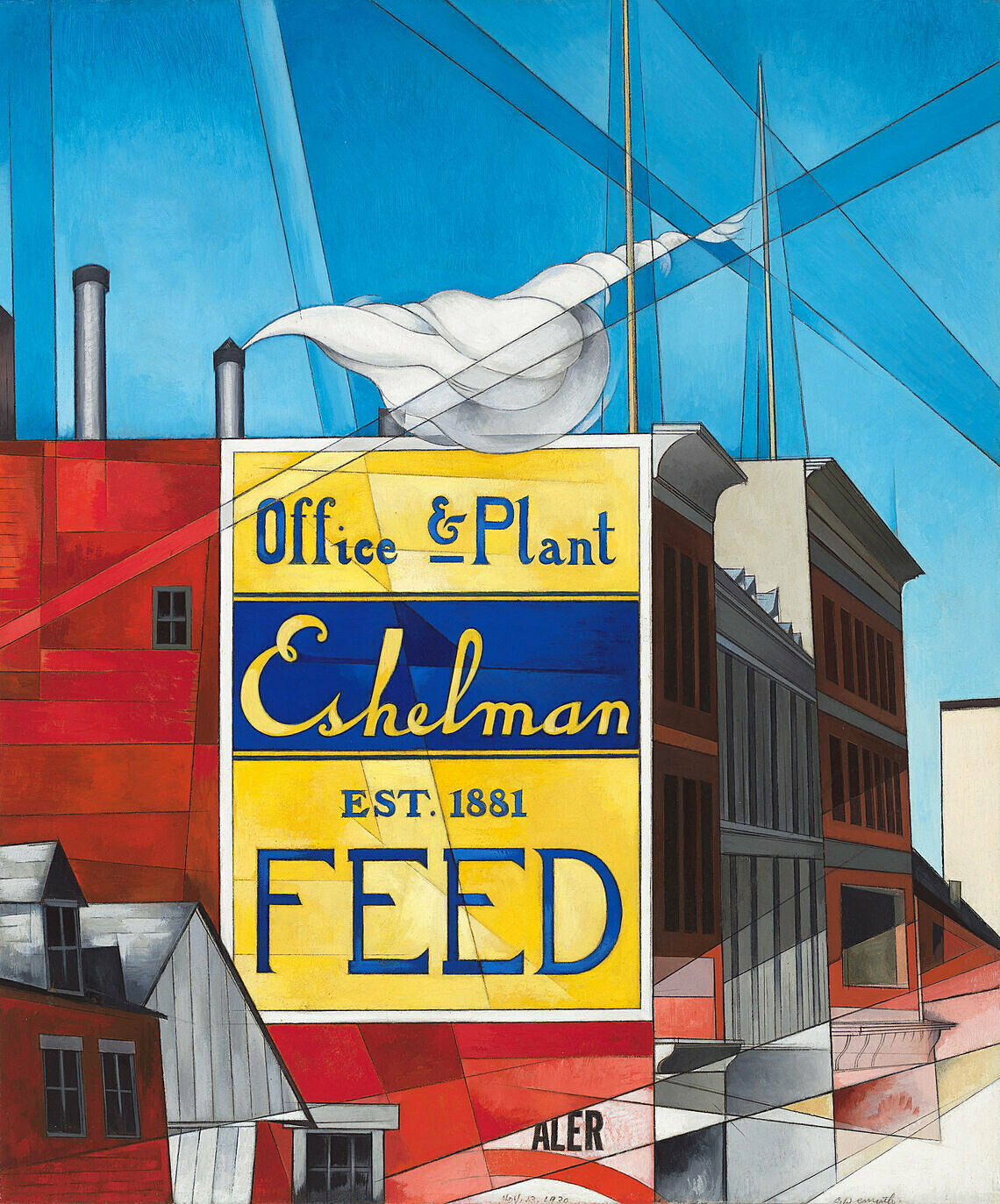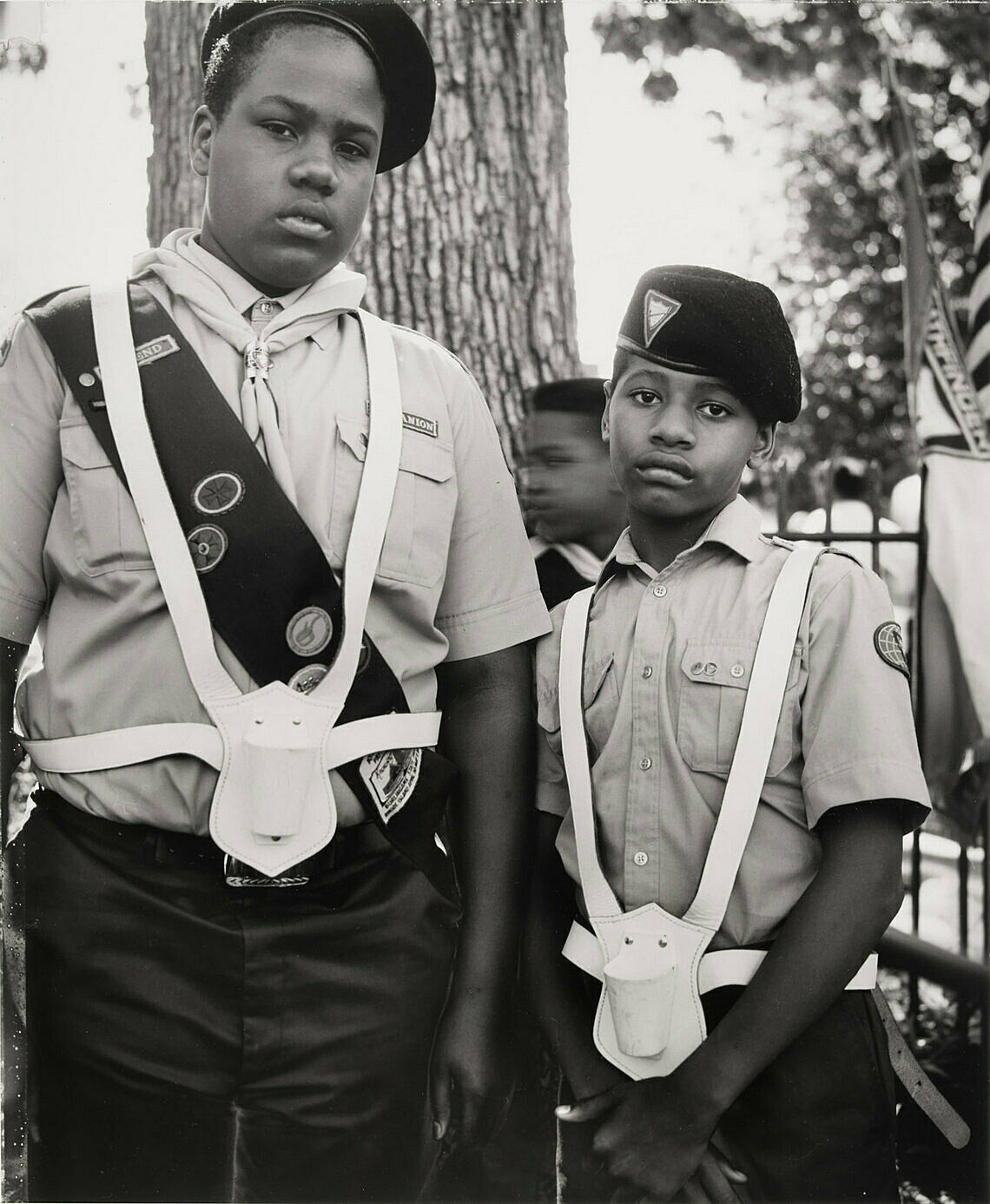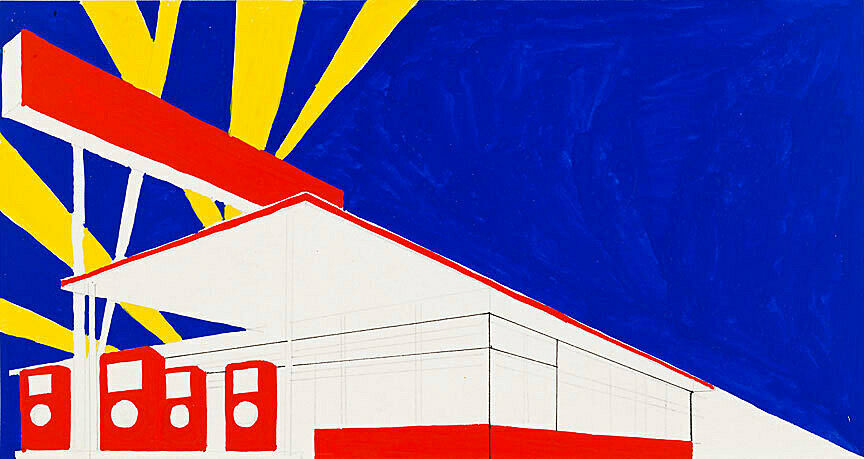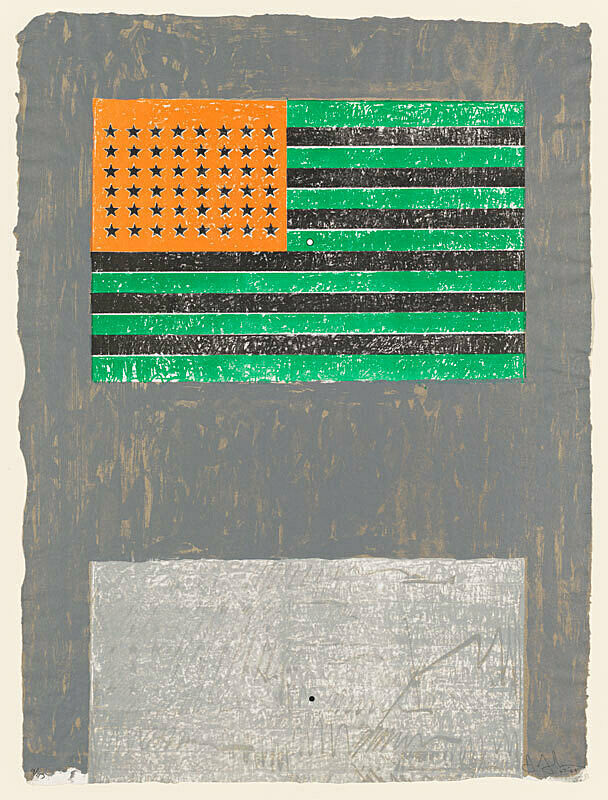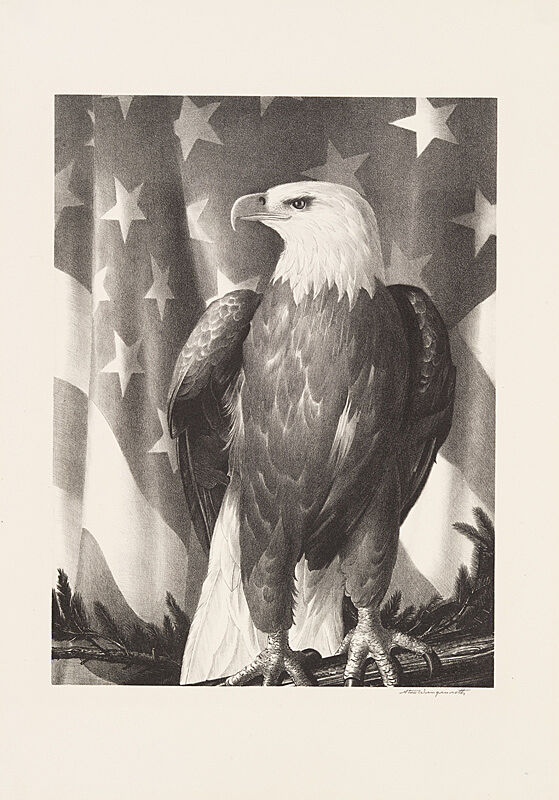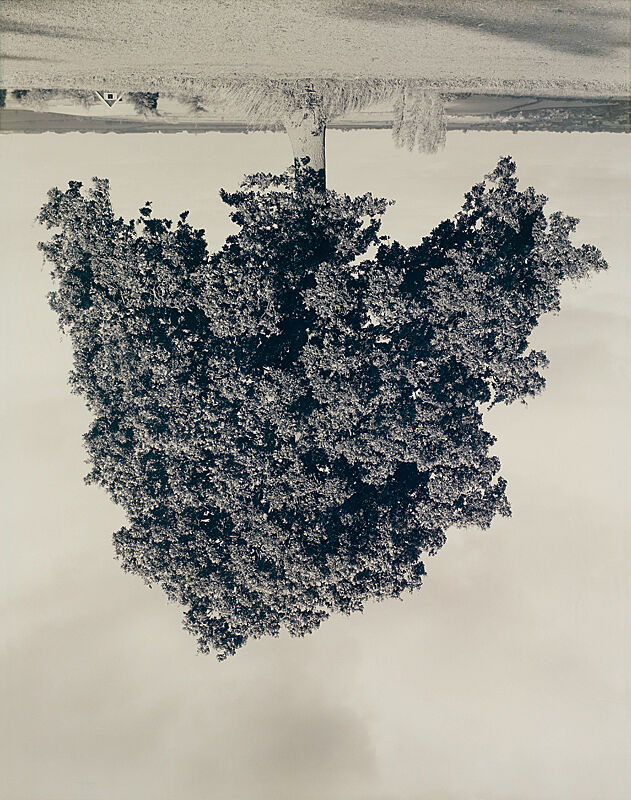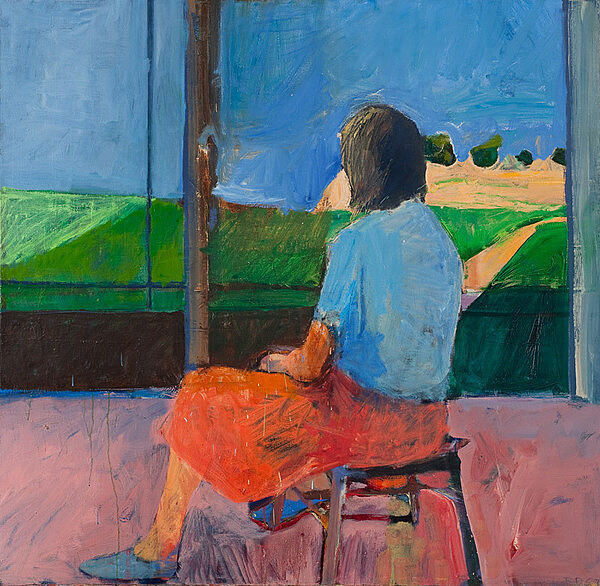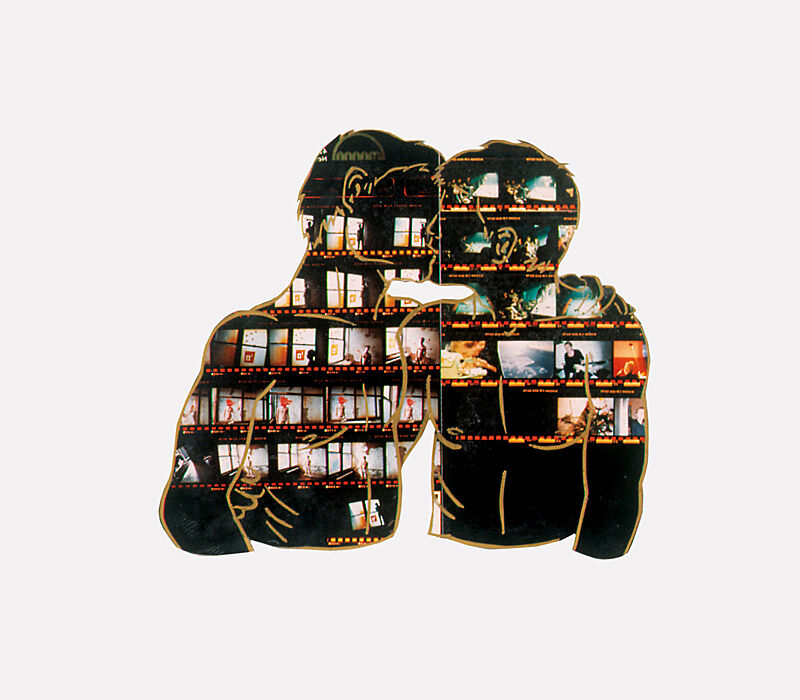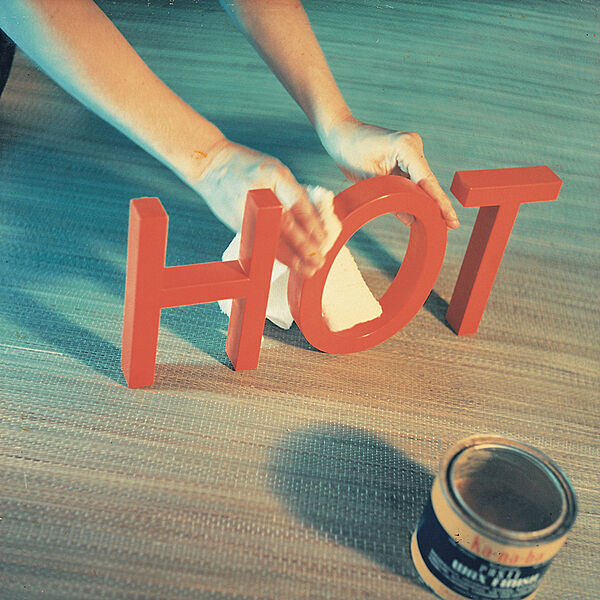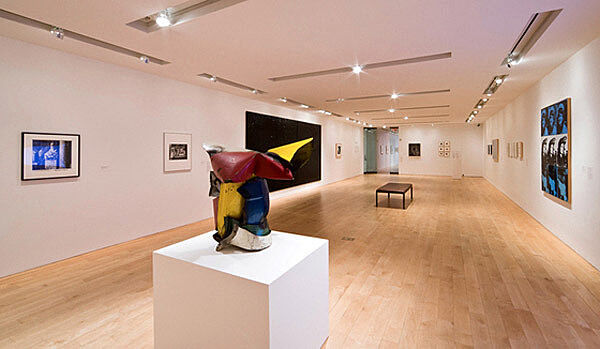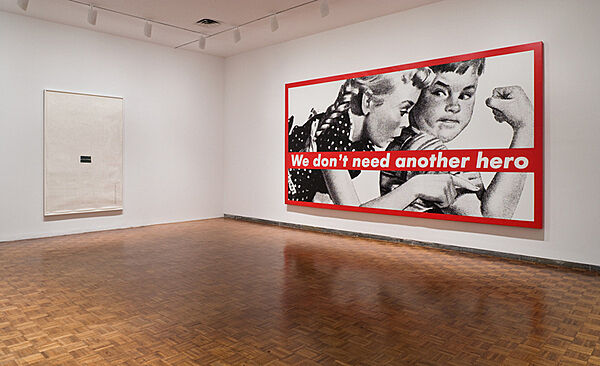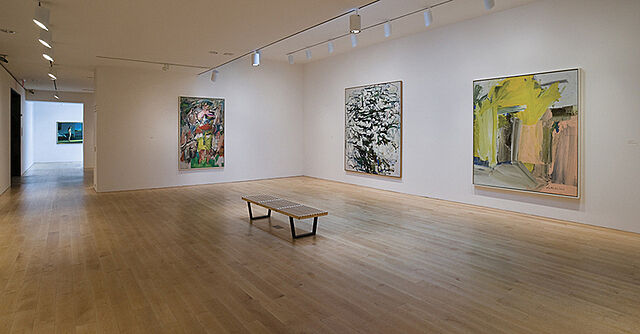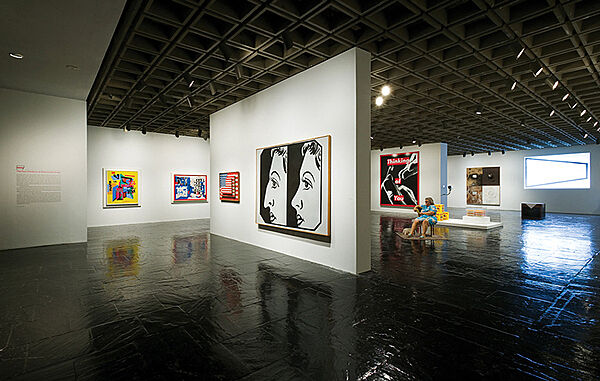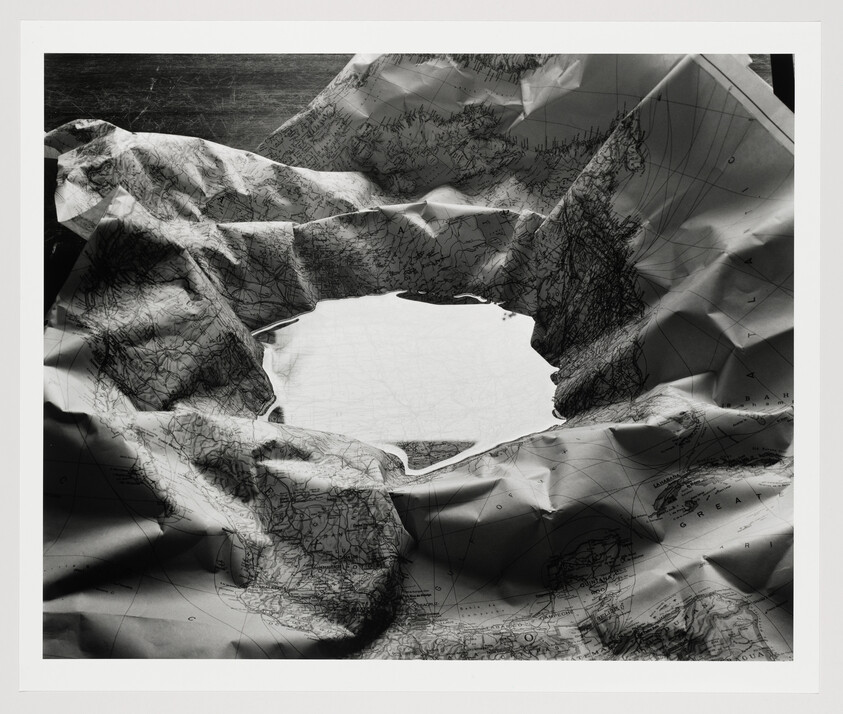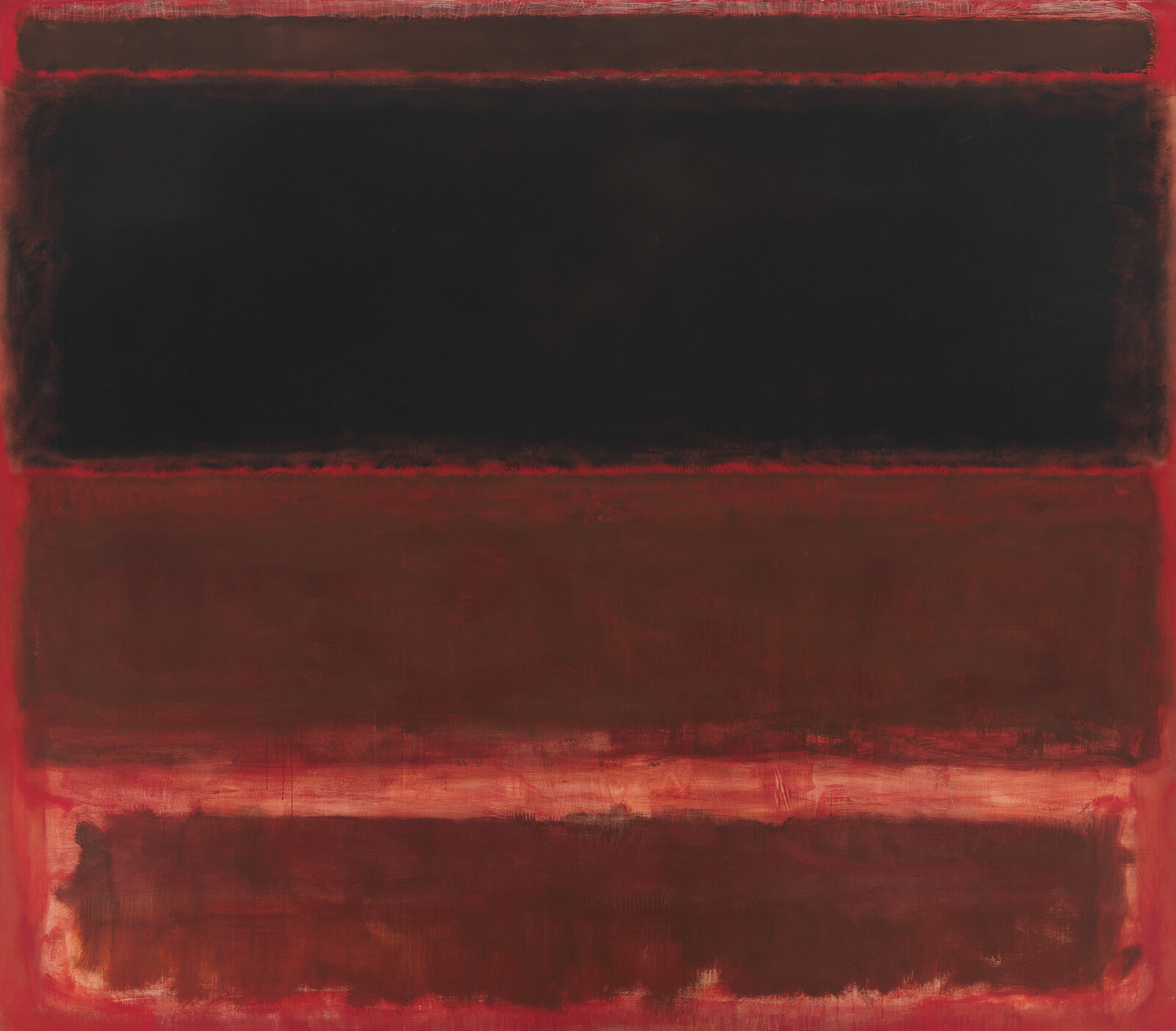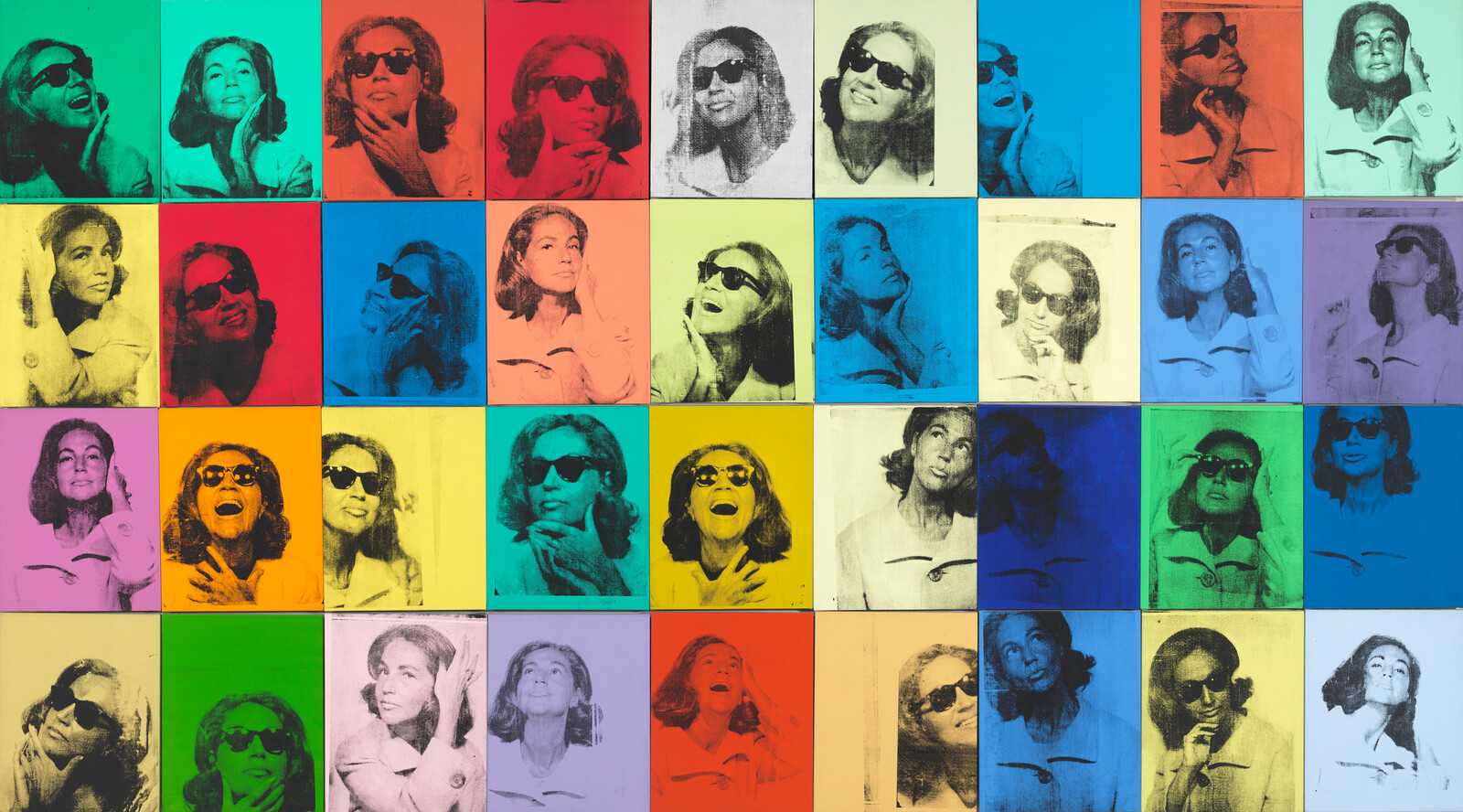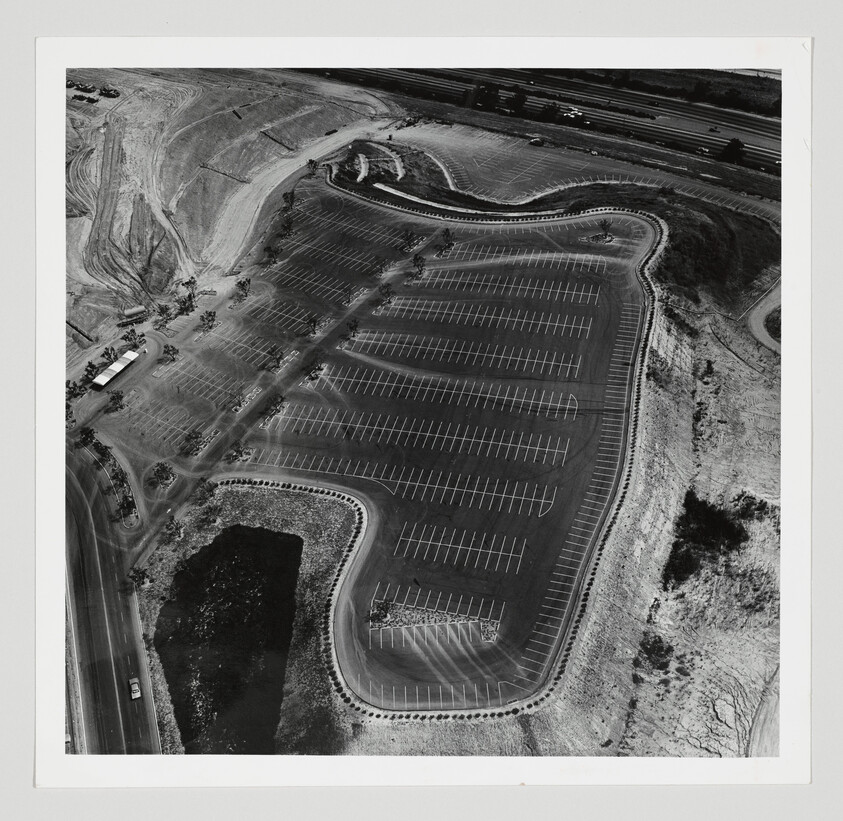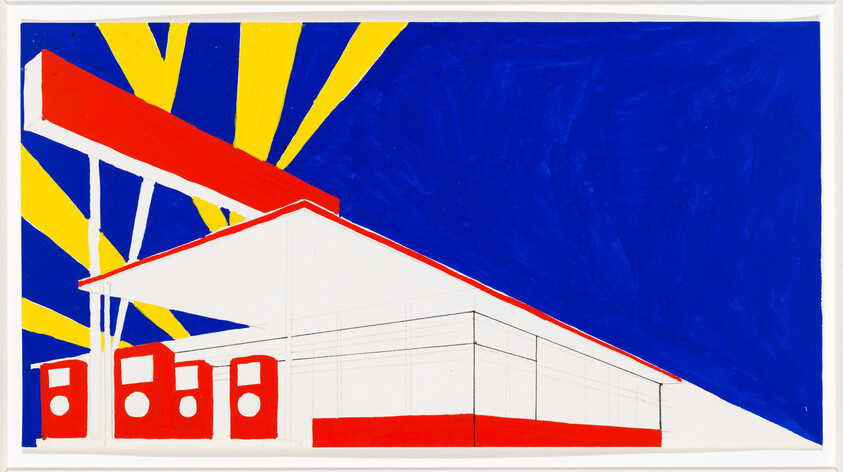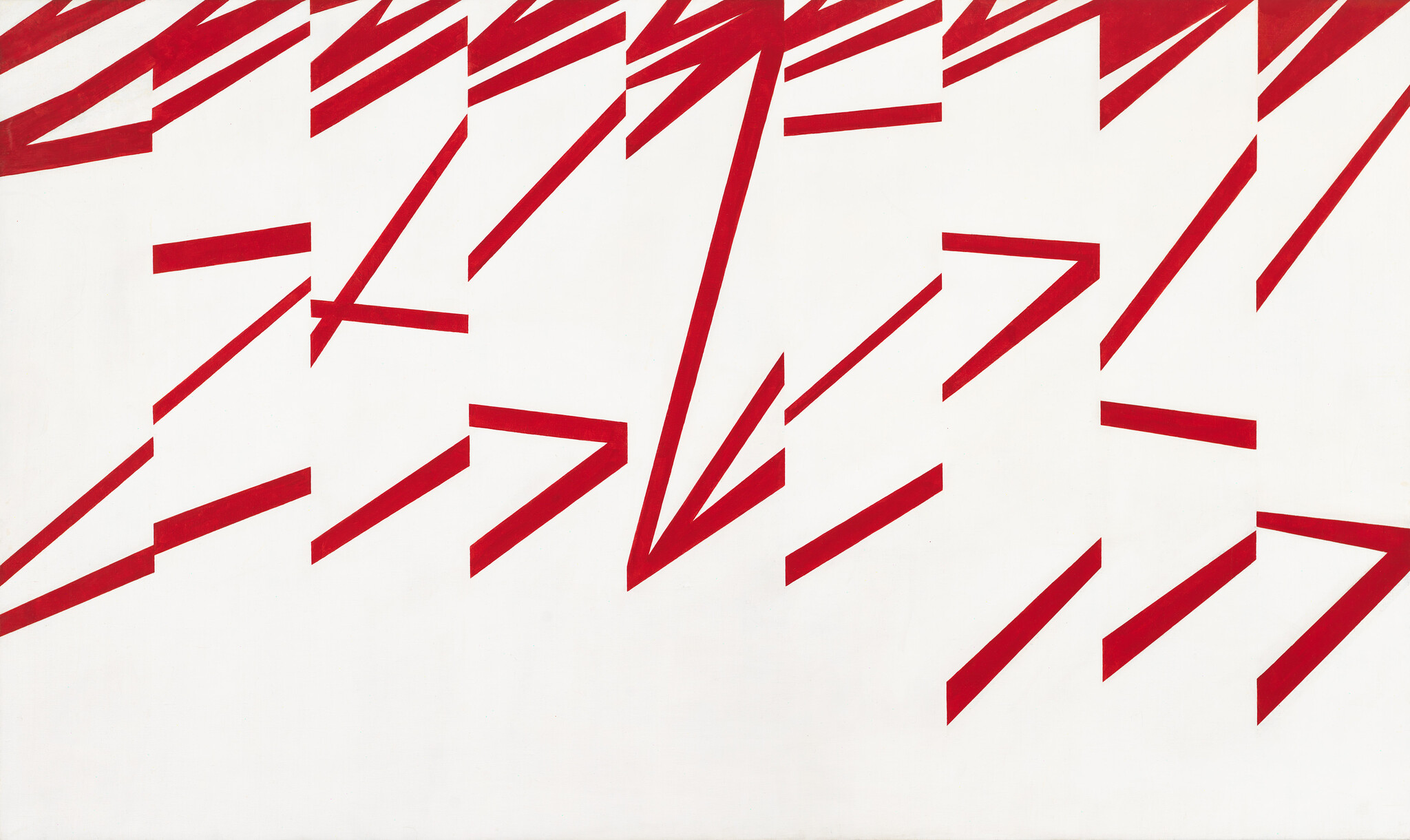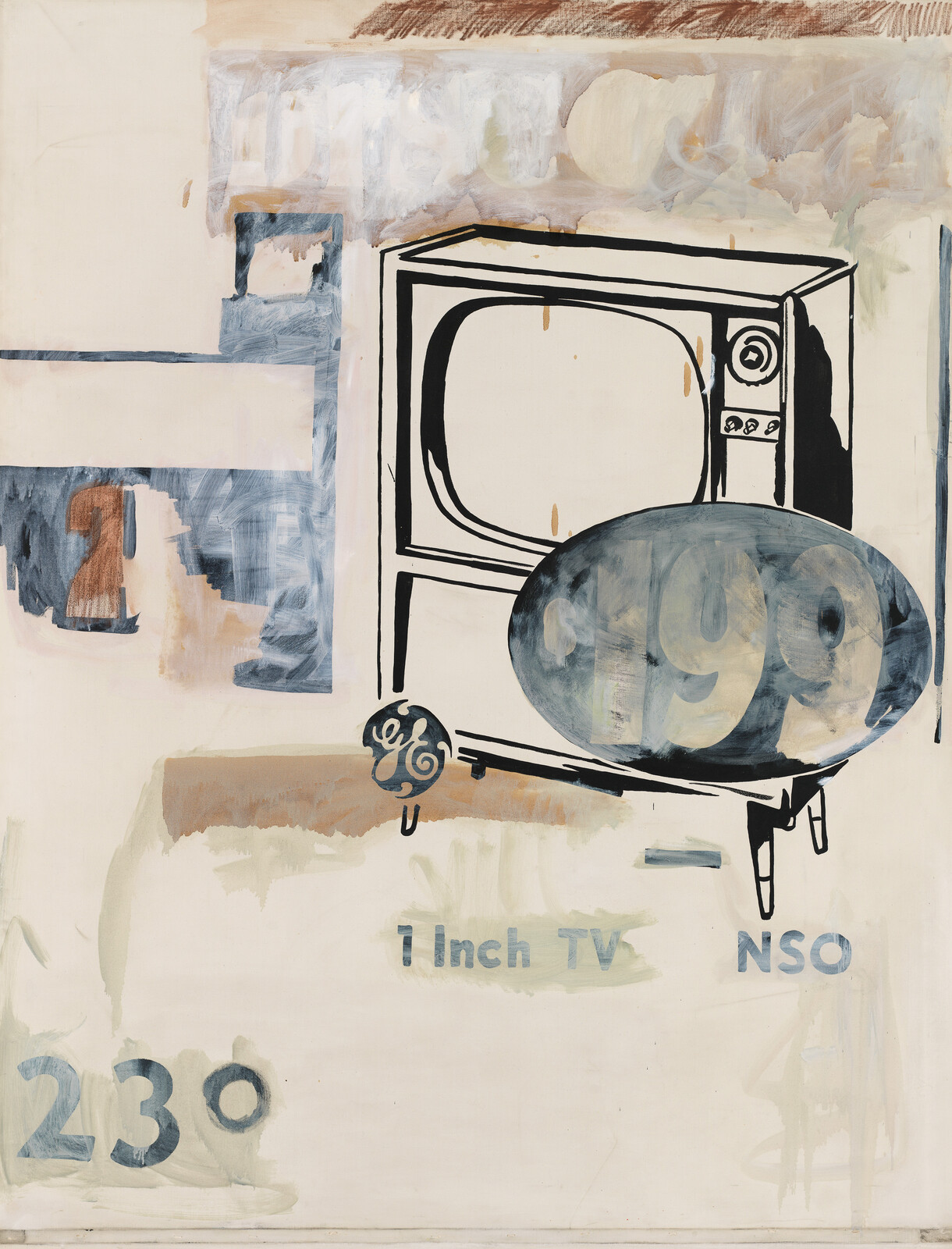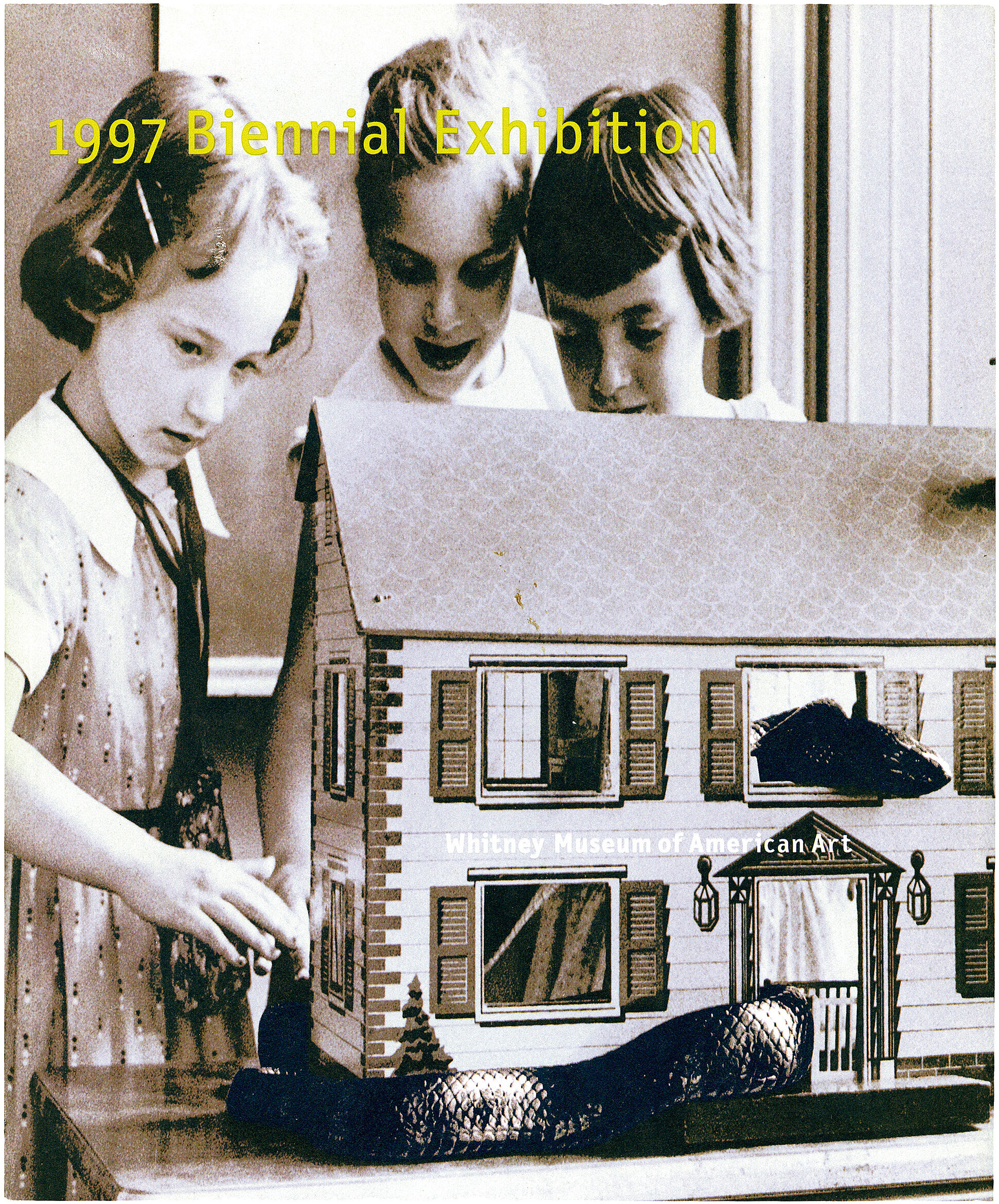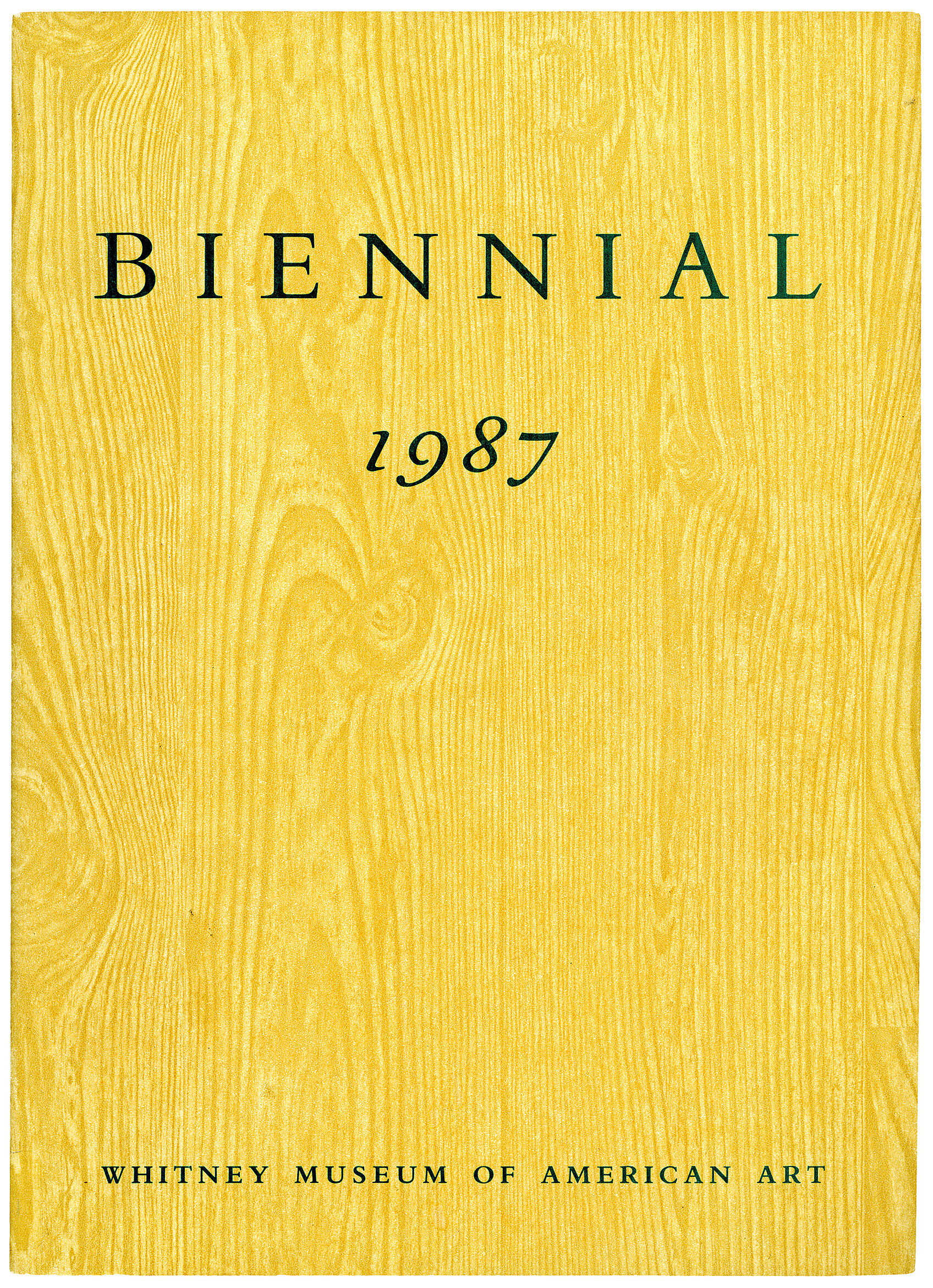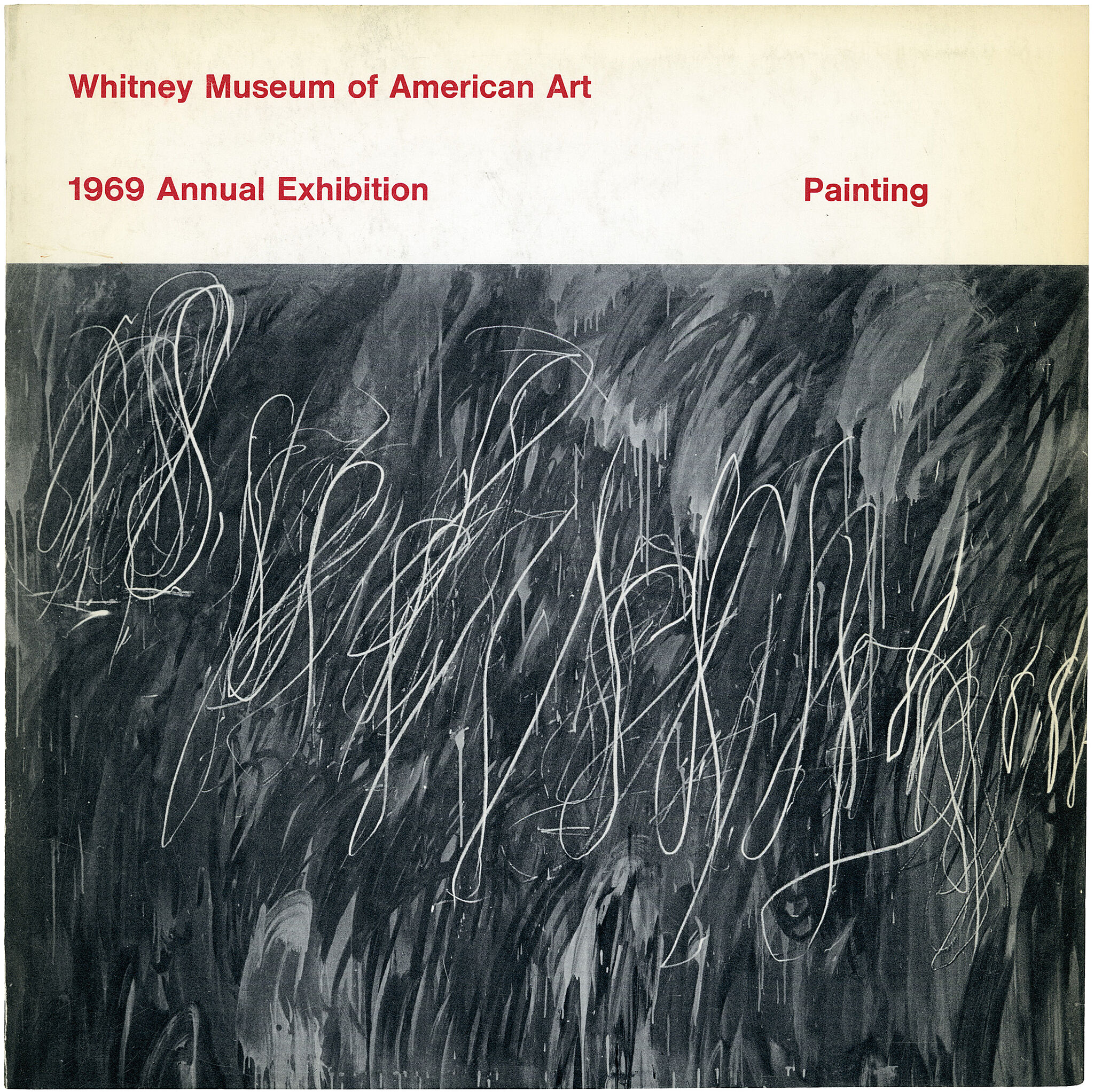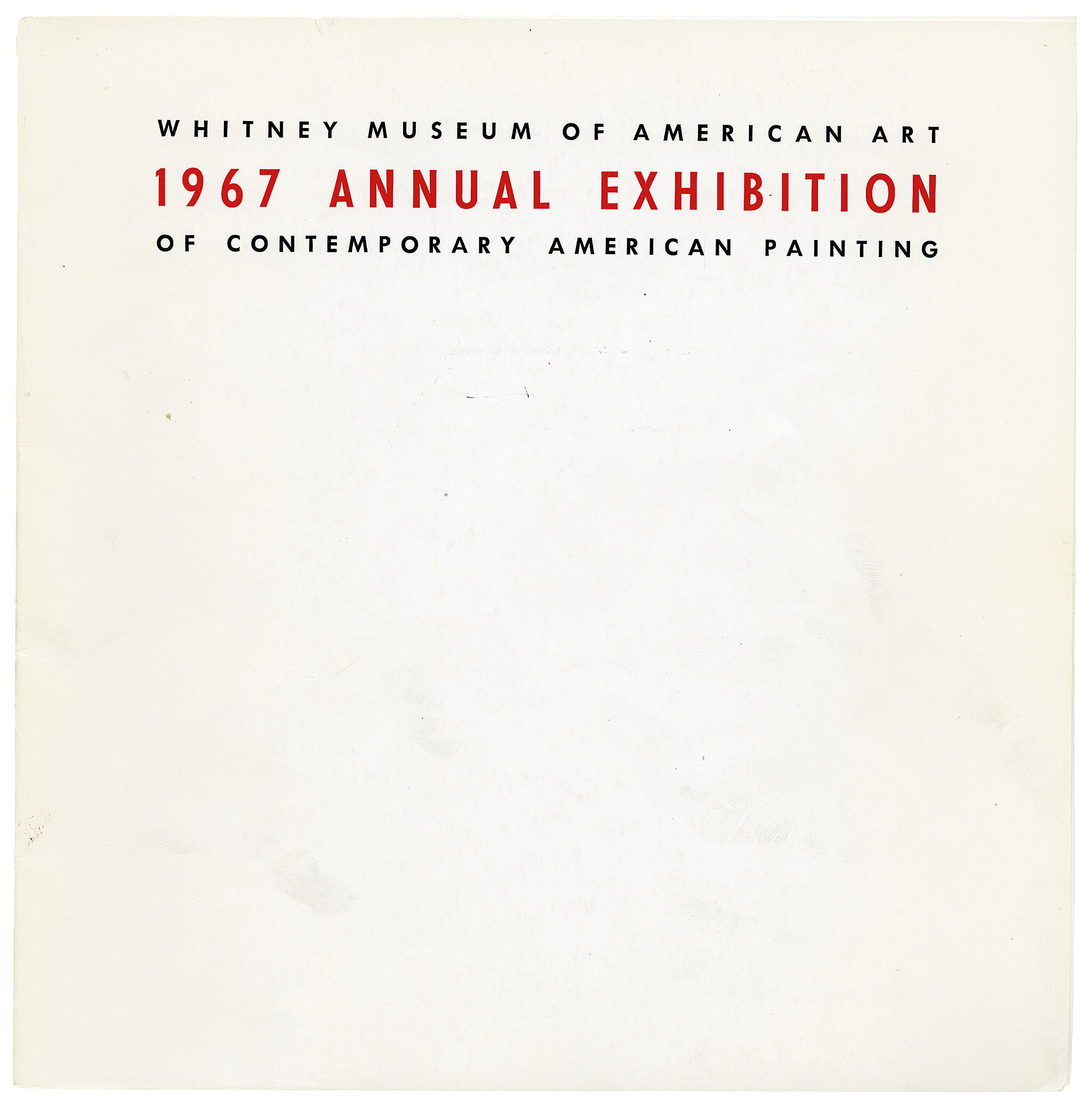Edward Ruscha
1937–
Ed Ruscha has incorporated popular imagery and text into his paintings, drawings, prints, photographs, artist’s books, and films since beginning his career in the early 1960s. These methods have aligned him with Pop and Conceptual art, yet his body of work frustrates easy categorization. For Large Trademark with Eight Spotlights, Ruscha amplified the 20th Century Fox film studio trademark to monumental proportions, rendering it, in his words, “Hollywoodized.” Most familiar as part of the pre-title sequence that gives way to a motion picture, the trademark here takes a starring role; the spotlights noted in the work’s title likewise emphasize the importance of branding in popular entertainment. At just over eleven feet long, the painting has a sharp diagonal momentum that provides what Ruscha describes as a “comic comment on the idea of speed and motion in a picture.” His dry sense of humor also underscores Standard Station, Amarillo, Texas. The photograph was created for the artist’s book Twentysix Gasoline Stations (1963), a collection of twenty-six images that is purposefully banal and seemingly useless—“a product,” the artist explained, “for a non-existent audience.” The lackluster company name, “Standard Oil,” and the generic quality of the stations’ architecture receive their complement in Ruscha’s prosaic approach. More interested in information than aesthetics, he described himself as “doing photographs without being a photographer.” Ironically, Ruscha’s snapshot aesthetic later became the “standard” for many Conceptual artists.
Lion in Oil displays the artist’s ongoing fascination with language’s potential to both clarify and confuse. The juxtaposition of the mirrored letters of its title—a palindrome—with the image of an impossibly symmetrical mountain range becomes increasingly strange with prolonged viewing. Ruscha painted the phrase in an invented typeface he calls “Boy Scout Utility Modern,” designed so that its style “doesn’t say anything.” The signpost-like lettering is extremely legible, but the words add up to nonsense, presenting the viewer with an odd combination of precision and obscurity. The highly detailed but ultimately fictional mountain range plays a similar role, providing what Ruscha calls an “anonymous backdrop for the drama of words.” The enduring ambiguity in Ruscha’s work is fitting for an artist who from the beginning has opined: “art has to be something that makes you scratch your head.”
Introduction
Edward Joseph Ruscha IV (, roo-SHAY; born December 16, 1937) is an American artist associated with the pop art movement. He has worked in the media of painting, printmaking, drawing, photography, and film. He is also noted for creating several artist's books. Ruscha lives and works in Culver City, California.
Wikidata identifier
Q430967
Information from Wikipedia, made available under the Creative Commons Attribution-ShareAlike License . Accessed January 2, 2026.
Introduction
Ruscha, originally from Oklahoma, studied at the Chouinard Art Institute from 1956 to 1960 in Los Angeles. His work was considered part of the Pop Art movement, and he gained prominence with his photographs of mundane subjects in Los Angeles such as gas stations and apartment buildings, as well as his paintings that featured isolated words or phrases. A major travelling retrospective of his work was organized by the San Francisco MOMA in 1982-1983. American artist.
Country of birth
United States
Roles
Artist, author, graphic artist, graphic designer, installation artist, painter, photographer, sculptor
ULAN identifier
500024159
Names
Ed Ruscha, Ed Ruschā, Edward Joseph Ruscha, Edward Ruscha
Information from the Getty Research Institute's Union List of Artist Names ® (ULAN), made available under the ODC Attribution License. Accessed January 2, 2026.

